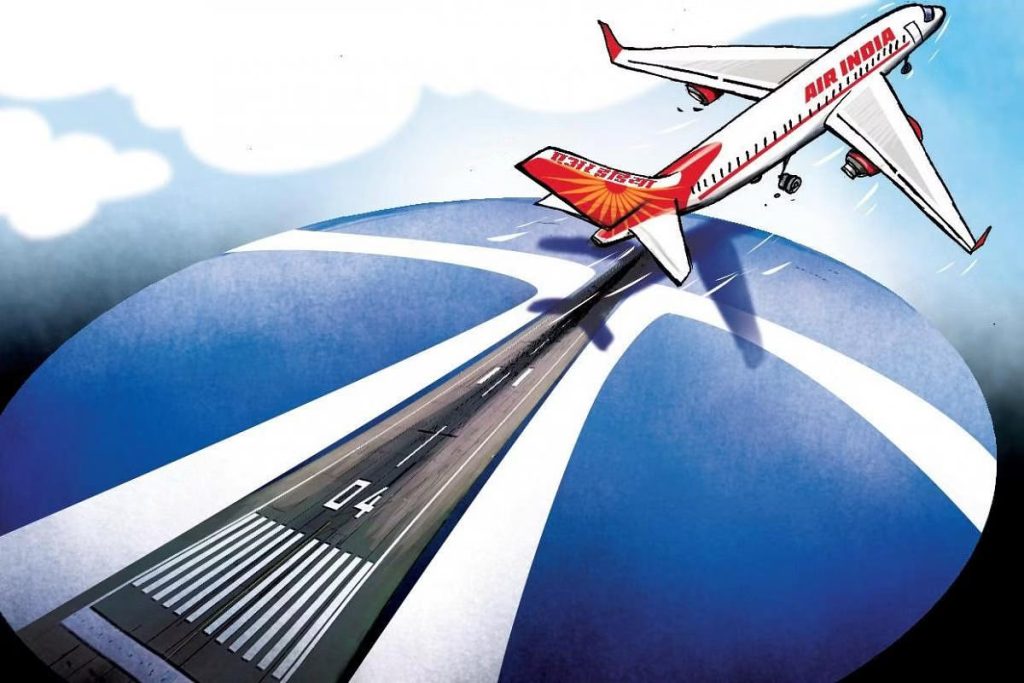
The gains of an Indian carrier expanding fleet are not restricted to network growth and better connectivity.
By Jitender Bhargava
Even though the constraints of Air India had been diagnosed much earlier by an expert committee which had recommended structural changes, successive governments did precious little to overcome the inherent shortcomings. The NDA government did, however, make a half-hearted attempt in the year 2000 to disinvest, but the exercise failed to fructify. The government ownership thus continued for two more decades thereafter, with yet another exercise in 2018 evading success.
In the meantime, the stranglehold of foreign carriers on the Indian market grew even more furiously as the Indian policymakers erroneously felt that giving unrestricted additional capacity and access to major cities to foreign airlines was the best and easiest solution to cater to the rapidly rising travel demand.
Airlines such as Emirates, Etihad and Qatar airlines from the Gulf, to name a few, and notably Singapore Airlines from Southeast Asia, began funnelling Indian passengers from various Indian cities to their respective hubs for onward travel to destinations in Europe and the USA. Likewise, to destinations in Asia Pacific and Australia. A weak Air India, compounded by a lack of interest in private airlines to operate long-haul flights to Europe and the USA in later years, thus became a boon for Gulf and Southeast Asian carriers.
Air India coming under the Tata fold in January 2022 thus signalled a paradigm shift in market dynamics. A glimpse of what would unfold in the coming months and years soon became visible. Post-disinvestment, the Tatas took an aggressive approach to growth. Air India first leased aircraft—the fastest way to expand its fleet and network. It also paced the restoration of aircraft that had remained grounded for want of spare parts during the sarkari avatar. Both these measures enabled the airline to expand its network by commencing flights to new destinations or adding additional frequencies on underserved routes. Simultaneously, it began the integration of airlines under the Tata umbrella—Vistara with Air India, and AirAsia India with Air India Express—to become a dominant player in the market.
Even as the industry was gradually recovering from the pandemic, Air India quickly placed the now-much-talked-about mega order for 470 aircraft—250 on Airbus Industries and 220 on Boeing. These included both narrow-bodied 400 aircraft, which can serve domestic and destinations in the Gulf and Southeast Asia, and 70 long-haul aircraft, which can connect to any destination worldwide through non-stop flights from anywhere in India.
Such was the size of the order that it evoked laudatory comments from the Indian prime minister, the French president, the US president and the British prime minister—something that had never happened before. Post the pandemic, with fears of recession looming large in Europe and the USA, world leaders saw immense prospects for creating new job opportunities.
President Joe Biden commented that “over one million American jobs across 44 states” (in the USA) would be created. Rishi Sunak, UK premier, expressed similar sentiments when he said:
“This landmark deal between Air India, Airbus and Rolls-Royce demonstrates that the sky’s the limit for the UK’s thriving aerospace sector.” He added that it would create more jobs in the sector.
It is apparent from the mega order that Air India has plans to grow at least at the pace our market is growing, if not faster. Recognising India’s potential, Campbell Wilson, CEO & MD of Air India, said that “it is one of the largest single aircraft orders by any airline, anywhere, ever, and testifies to India’s unique combination of extraordinary scale and growth opportunity.”
The induction of aircraft in a staggered manner over the next five years or so will enable Air India to enhance connectivity to and from India aggressively. With its limited long-haul aircraft fleet, Air India currently operates 47 weekly non-stop flights to five destinations in the USA, the largest global aviation market. Most of these flights operate from Mumbai and Delhi. The absence of direct flights from other major cities is helping foreign airlines to exploit our market. Once more long-haul A350s (five of the 40 ordered will be inducted in the second half of 2023) and B777s and B787s are available, Air India can harness the traffic originating or bound for other major Indian cities viz. Bengaluru, Hyderabad, Chennai, etc. through non-stop flights and record exponential growth.
Passengers prefer non-stop flights to one-stop flights that all Gulf and European carriers currently offer between India and USA because while non-stop flights take just 15–18 hours from any city in India to any destination in the USA, one-stop flights take six to 10 hours more. The introduction of non-stop flights by Air India will make the Air India product superior to competing airlines and provide better connectivity to the large Indian diaspora settled in the USA. Why would anyone opt for a one-stop flight when a non-stop flight is available?
The gains of an Indian carrier expanding fleet are not restricted to network growth and better connectivity but also to the generation of employment. Hitherto, when foreign carriers were ferrying Indian traffic, pilots and cabin crew were being hired by them. In the changed circumstances, our fellow citizens will get employment not just as pilots, cabin crew and aircraft maintenance engineers but also for ground functions.
Indigo has been a dominant player in the domestic market, accounting for 55% market share. Air India, Vistara, Air Asia (all Tata airlines), Go First, SpiceJet, Akasa, etc., share the remaining 45%. As the Indian domestic market has almost regained the pre-Covid level of passengers, one expects the market to grow. The prime minister only recently stated that the number of functional airports would be doubled from 74 to 147 in the coming years, thus increasing the scope for growth even further. The 400 narrow-bodied aircraft A320s and B737s, part of the mega order, will help Air India augment capacity—both for flying on domestic routes and to neighbouring countries in the Gulf and Southeast Asia. The intense competition is bound to help the travelling public.
One sincerely hopes that Air India’s order for a record number of aircraft is a harbinger of many more good developments in the Indian aviation industry.
(The writer is the Former executive director, Air India, and author of The Descent of Air India)





